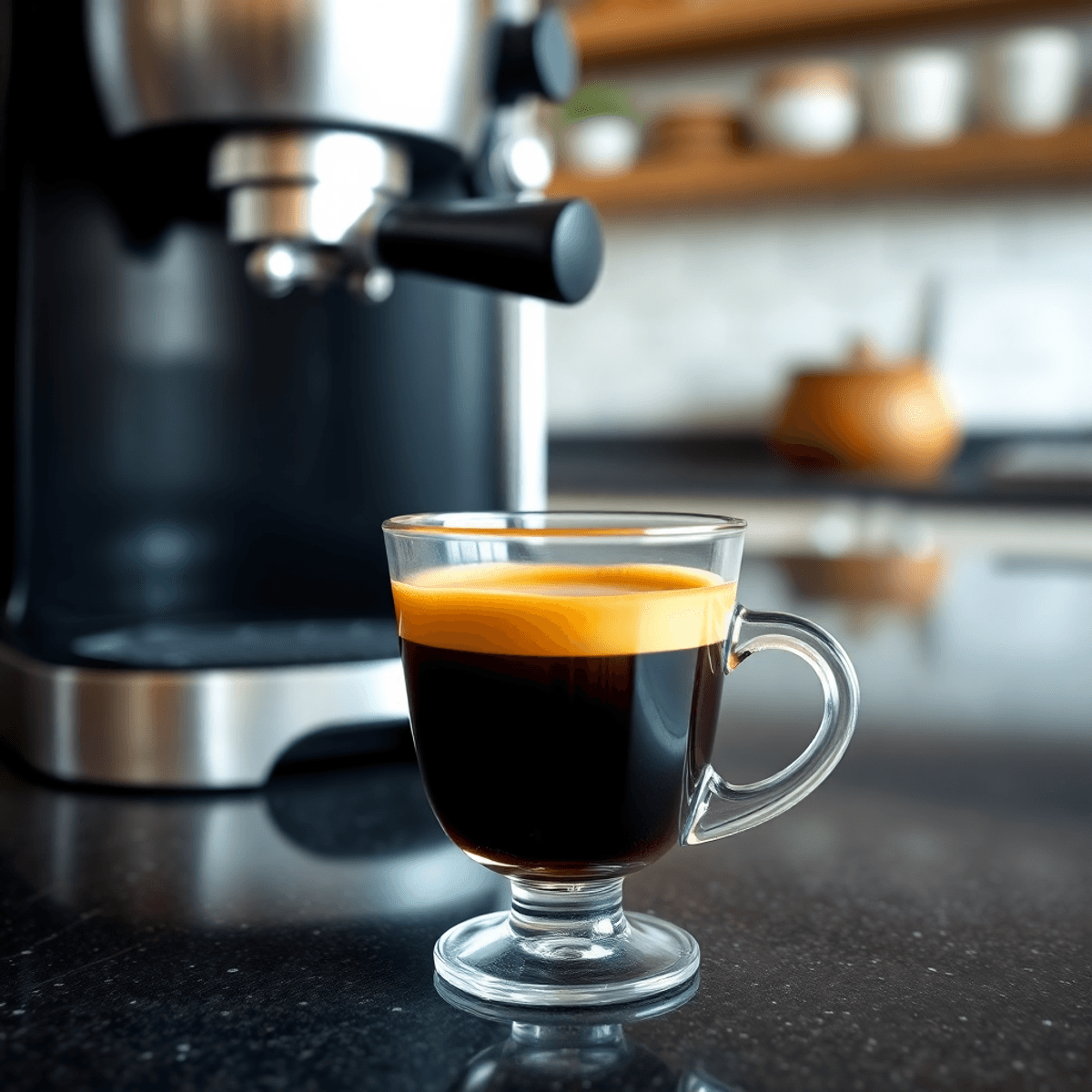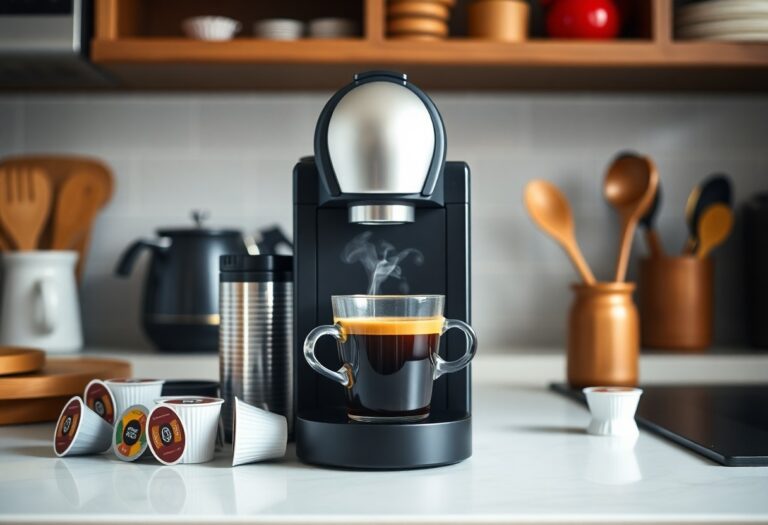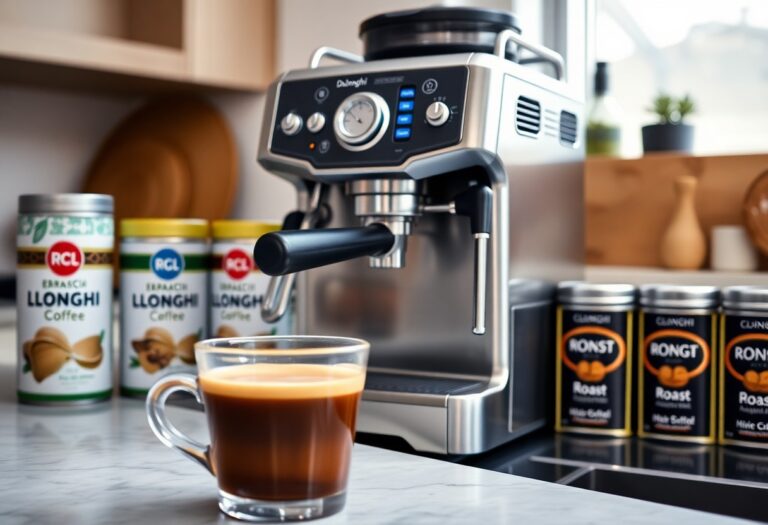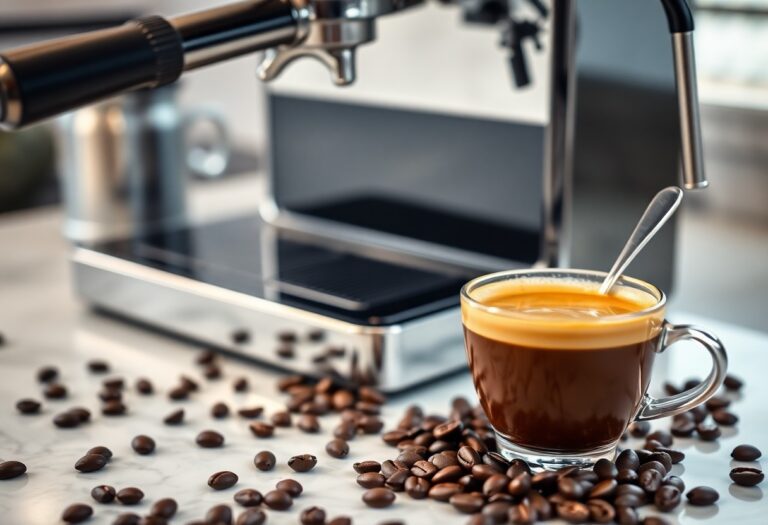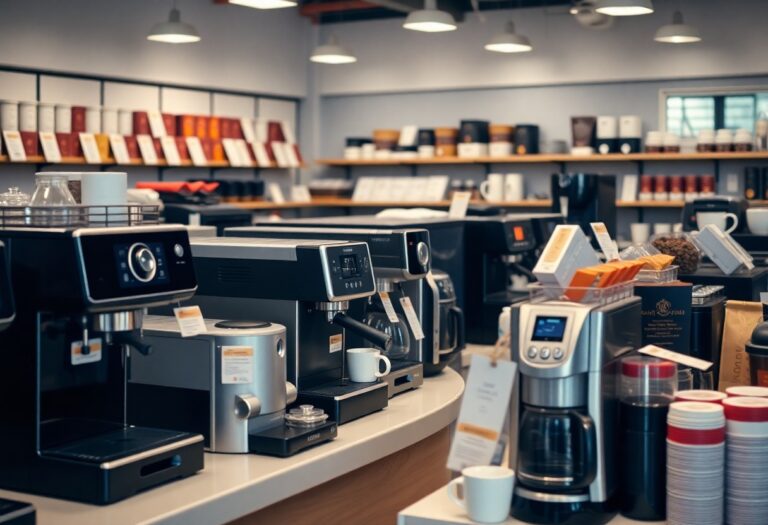How to Make Espresso with a Coffee Machine: Brewing Guide
In this espresso brewing guide, you will learn how to make espresso using a coffee machine. We’ll go over the important steps and techniques you need to know in order to brew a delicious shot of espresso at home. This article will teach you about what makes a great espresso, how to adjust your brewing process, and give you the confidence to make your favorite espresso drinks.
Keeping your coffee machine in good condition is also important for getting the best results. No matter if you have a Breville, Cuisinart, Ninja, or Keurig coffee machine, knowing how to descale or clean it can greatly enhance your brewing experience. This guide also includes information on how to descale a Cuisinart coffee machine, program a Cuisinart coffee machine, and clean a Ninja coffee machine.
Understanding Espresso
Espresso is a unique brewing method that delivers a concentrated burst of flavor in a small, powerful shot. It is created by forcing boiling water through finely ground, compacted coffee under high pressure. Here are some key characteristics that can help you identify a well-made espresso:
1. Rich Crema
A hallmark of quality espresso is the presence of a luxurious layer of crema on top, offering a velvety texture and enhancing the overall taste experience.
2. Intensity and Flavor
Espresso boasts a bold and intense flavor profile, packing a punch of concentrated coffee essence that lingers on the palate long after the last sip.
3. Versatile Base
Acting as the foundation for various beloved coffee beverages like lattes, cappuccinos, and macchiatos, espresso forms the heart of these creations, providing a robust base for milk-based drinks.
However, mastering this art form requires more than just understanding its characteristics. It’s essential to know about the equipment used in making espresso and how to maintain it for optimal performance. For instance, cleaning your coffee machine with vinegar can significantly enhance its longevity and performance.
Additionally, understanding how much coffee to put in a coffee machine can help in achieving the perfect brew every time. While espresso is primarily made using an espresso machine, it’s interesting to note that other brewing methods like [French press](https://www.coffeemakerexpert.com/what-is-a-french-press-coffee-machine-complete-explanation) can also yield delightful results when done correctly.
If you’re considering investing in an espresso machine, you might want to explore options such as Nespresso machines known for their convenience and consistency. Alternatively, Ninja coffee machines offer versatile brewing options that can cater to different preferences.
Remember, espresso isn’t just a drink; it’s an art form that requires precision and expertise to master.
Essential Equipment for Brewing Espresso
Brewing espresso requires specific tools designed to handle the precision and pressure involved in the process. Choosing the right equipment directly influences the quality of your espresso shots.
Espresso Machine Types
1. Manual Machines
You control every step from grinding, tamping, to pulling the shot. Offers maximum control but demands skill and consistency. Ideal for enthusiasts who enjoy hands-on brewing. If you’re interested in exploring manual brewing methods, this type of machine is a great way to start.
2. Semi-Automatic Machines
Automate water pressure while you manage grinding, tamping, and timing. Balances control with convenience. Popular among home users wanting quality without full manual effort.
3. Automatic Machines
Fully automate brewing with programmable settings for dose and extraction time. Best for ease of use and speed but offers less customization. Suitable for beginners or busy environments. If you own a Black and Decker coffee machine, you might find this operating guide helpful.
Each machine type has trade-offs between control, convenience, price, and learning curve. Choose based on your experience level and how involved you want to be in the brewing process.
Burr Grinder
A burr grinder is essential for achieving a consistent fine grind size needed for espresso extraction. Unlike blade grinders that chop beans unevenly, burr grinders crush beans uniformly which:
- Ensures even extraction and flavor balance
- Prevents over or under-extraction caused by inconsistent particle sizes
- Allows precise adjustment of grind size to dial in shots
Look for a grinder with multiple grind settings capable of producing a powdery consistency similar to table salt or powdered sugar.
Tamper
Proper tamping compresses coffee grounds evenly into a compact puck inside the portafilter. This prevents water channeling where water flows unevenly through loose areas, causing weak or bitter shots.
- Use a tamper matched to your portafilter size (usually 58mm)
- Apply about 30 pounds (13.6 kg) of pressure consistently
- Ensure an even, level tamp surface by distributing grounds before pressing
Consistent tamping technique stabilizes extraction and improves shot quality substantially.
Milk Steamer (Optional)
For those who enjoy milk-based drinks like lattes or cappuccinos, a milk steamer attachment or wand allows you to froth milk manually. It creates creamy microfoam essential for texture and latte art.
While not mandatory for pure espresso shots, having a good milk steamer expands your drink options beyond straight espresso and enhances your home barista skills.
Choosing the right combination of an espresso machine, burr grinder, tamper, and optionally a milk steamer sets the foundation for crafting excellent espresso at home. Each piece plays a critical role in controlling variables that impact flavor extraction during brewing.
Remember to also consider maintenance aspects such as cleaning your coffee machine regularly. For example:
- If you have a Mr Coffee machine, this maintenance guide could be quite useful.
- If you’re using a Cuisinart coffee machine, these step-by-step cleaning instructions can help keep your brewer in top shape.
Step-by-Step Guide to Brewing Espresso with a Coffee Machine
Warming up your Espresso Machine
Importance of Preheating Your Espresso Machine Before Brewing: Preheating your espresso machine is a crucial step that is often overlooked but essential for achieving optimal results. Preheating ensures temperature stability during extraction, which is key to getting the best flavor from your coffee.
Grinding Fresh Coffee Beans Just Before Extraction
How to Grind Fresh Coffee Beans Just Before Extraction: To achieve optimal flavor extraction, it’s vital to grind fresh coffee beans just before brewing. Using a burr grinder effectively can help you get the right consistency, similar to powdered sugar or salt, which is ideal for espresso extraction.
Proper Use and Maintenance of Portafilter
Portafilter Preparation: Even Distribution and Tamping of Coffee Grounds in Portafilter. It’s essential to evenly distribute and tamp down the coffee grounds in your portafilter. This practice helps prevent channeling during extraction, ensuring that water flows evenly through the grounds for a balanced flavor in your shot.
Timing Your Extraction
Ideal Water Temperature Range (195°F to 205°F / 90°C to 96°C): Locking the portafilter into place without excessive force is crucial for good contact between water and coffee during the extraction process. Timing plays a significant role, with the extraction ideally lasting between 25-30 seconds for the best results in your espresso shot.
Cleaning Your Coffee Machine
Maintaining your coffee machine is vital for its longevity and performance. Regular cleaning can prevent buildup and ensure consistent flavor in your brews. You can use natural cleaning methods such as cleaning a coffee machine with vinegar. If you’re using a K-cup coffee machine, follow these maintenance instructions for optimal results. For those who own drip coffee machines, here are some useful maintenance instructions. Lastly, if you have a Hamilton Beach coffee machine, refer to this operating guide for proper usage and maintenance tips.
Dialing in Your Espresso Shot
When dialing in your espresso shots, making slight adjustments to the grind size and tamping pressure can significantly impact the flavor balance and overall quality of your shots. Here’s how you can effectively adjust these variables:
1. Grind Size Adjustment
Fine-tuning the grind size is crucial to control the rate of extraction. If your espresso shot tastes sour or weak, the grind might be too coarse. On the other hand, if it tastes bitter or astringent, the grind might be too fine.
Make small adjustments: Start with minor changes to avoid drastic shifts in flavor. Remember that even a small tweak can lead to noticeable differences.
2. Tamping Pressure Effects
The pressure applied while tamping impacts how water flows through the coffee grounds during extraction.
Consistent pressure: Aim for around 30 pounds of pressure when tamping down the coffee in the portafilter. This helps ensure uniformity and proper extraction.
Identifying Signs of Over-Extraction (Bitter) vs Under-Extraction (Sour)
Recognizing signs of over-extraction and under-extraction is crucial when dialing in your espresso shots. Here are some taste testing techniques to help you differentiate between these common issues:
1. Over-Extraction (Bitter)
Taste profile: If your espresso tastes overly bitter, like burnt charcoal, it’s likely over-extracted.
Possible solutions: Adjust your grind size coarser or reduce extraction time to balance the flavors.
2. Under-Extraction (Sour)
Taste profile: An under-extracted shot may taste sour, acidic, or even salty.
Remedies: Try a finer grind size or extend the extraction time slightly to enhance sweetness and body.
By understanding these indicators and making precise adjustments to your grind size and tamping pressure, you can refine your espresso brewing technique and achieve that perfect balance of flavors in every shot.
Additionally, maintaining your coffee machine is vital for consistent results. Regularly descaling your coffee machine can prevent buildup that affects flavor. For a comprehensive guide on this essential process, check out this complete decalcification guide. Moreover, if you’re considering using vinegar for cleaning due to its effectiveness, understanding how much vinegar to clean a coffee machine is also crucial for optimal results.
Serving and Using Your Espresso Shots Like a Pro!
Serving Straight Espresso
Serving straight espresso immediately after brewing is key to preserving its full flavor and aromatic profile. The crema—the golden, creamy layer on top—is most vibrant right after extraction and begins to dissipate quickly. Waiting too long can result in a flat, less enjoyable shot.
Best practices for serving straight espresso:
- Use pre-warmed cups to keep the espresso hot longer.
- Serve within 15-30 seconds of brewing to capture the optimum balance of acidity, sweetness, and bitterness.
- Sip slowly to appreciate the complex flavors and texture.
- Avoid stirring or adding sugar right away; taste the shot as is first to understand its character.
Freshly brewed espresso offers a concentrated burst of flavor that fades rapidly as it cools and oxidizes. Serving it promptly ensures you experience the coffee exactly as intended by the barista or yourself.
Enjoying Brewed Espresso Beyond Straight Shots
Espresso is exceptionally versatile, acting as the foundation for many popular milk-based coffee drinks. It pairs beautifully with steamed milk and foam to create smooth, creamy beverages that appeal to a wide range of tastes.
Popular milk-based coffee drinks featuring espresso:
- Latte: A single or double shot topped with steamed milk and a small layer of microfoam. Lattes are milder and creamier, making them perfect for those who prefer less intense coffee flavors.
- Cappuccino: Equal parts espresso, steamed milk, and thick foam. This creates a frothy texture with a stronger coffee presence than a latte.
- Macchiato: Espresso “stained” with just a dollop of foamed milk. It highlights the espresso’s boldness while softening its intensity slightly.
- Flat White: Similar to a latte but with less foam and more velvety steamed milk for a richer mouthfeel.
Using your brewed espresso as a base lets you experiment with flavors by adding syrups, spices like cinnamon, or even cold milk alternatives for iced variations. This flexibility turns your espresso machine into an all-in-one café experience at home.
Mastering both serving straight espresso and milk-based coffee drinks expands your ability to enjoy coffee tailored perfectly to your mood or company.
Maintaining Your Equipment: Keeping Your Espresso Machine in Top Shape!
Maintaining your espresso machine is crucial for ensuring the longevity of the equipment and the quality of your coffee. Regular cleaning routines that every espresso machine owner should follow are essential. Neglecting this aspect can lead not only to build-up but also potential damage over time.
One of the most important aspects of [cleaning espresso machines](https://www.coffeemakerexpert.com/how-to-clean-a-coffee-machine-essential-maintenance-tips) is to follow specific tips on cleaning the portafilter and group head after each use. This ensures consistent performance from your machine and helps in [maintaining coffee quality](https://www.coffeemakerexpert.com/how-to-use-a-french-press-coffee-machine-brewing-technique-guide).
For those who are new to using an espresso machine or need a refresher, [this brewing guide](https://www.coffeemakerexpert.com/how-to-use-a-keurig-coffee-machine-complete-operating-guide) provides a comprehensive overview on how to make espresso with a coffee machine.
The Fascinating History Behind Our Beloved Beverage!
Espresso machines have a rich history that dates back to the late 19th century in Italy. One of the key figures in this evolution was Angelo Moriondo, an Italian inventor credited with creating an early version of the espresso machine in 1884. Moriondo’s machine was a breakthrough in coffee brewing technology, using steam and pressure to extract coffee quickly and efficiently.
Another notable innovator in the history of espresso machines is Luigi Bezzera, who made significant improvements to Moriondo’s design. Bezzera introduced a pivotal innovation in espresso brewing by adding a removable portafilter to the machine. This enhancement allowed for a faster and more convenient brewing process, making espresso preparation more efficient and user-friendly.
The contributions of Moriondo and Bezzera laid the foundation for the modern espresso machines we use today. Their inventions revolutionized the way coffee is brewed and served, shaping the culture of coffee consumption worldwide. The evolution of espresso machines reflects a fascinating journey of innovation and craftsmanship that continues to inspire coffee enthusiasts and baristas alike.
Conclusion
Start your espresso brewing journey today! Practice your skills and embrace experimentation to discover the perfect espresso that suits your taste buds. Remember, making espresso is an art that involves patience and precision. Enjoy the process and savor every sip of your meticulously crafted brew. Happy brewing!

